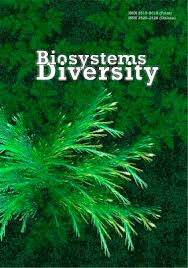Allelopathic potential and cytostatic activity of Antarctic moss Sanionia georgicouncinata (Amblystegiaceae)
Allelopathic potential and cytostatic activity of Antarctic moss Sanionia georgicouncinata (Amblystegiaceae)
Author(s): O. Dziuba, A. Liubinska, P. Khoyetskyy, T. BedernichekSubject(s): Agriculture, Regional Geography, Environmental Geography
Published by: Дніпропетровський національний університет імені Олеся Гончара
Keywords: bioassay; allelopathy; maritime Antarctic; Argentine Islands; test plant; root growth;
Summary/Abstract: From the first half of the XX century, the maritime Antarctic was a region with high regional warming rates. At the beginning of the XXI century, regional warming strongly slowed down, but during the next twenty years the near-surface temperatures and mean annual precipitation at the Antarctic Peninsula will most probably increase. Higher temperatures and precipitation make the conditions in the maritime Antarctic more favourable for plants, including invasive species. Moreover, the increasing number of Antarctic tourists unintentionally transport thousands of seeds to the Antarctic on their clothes and equipment. In such circumstances, it is important to evaluate possible defensive mechanisms of native plant species, including their allelopathic potential. The objective of this study was to evaluate the allelopathic potential and cytostatic activity of Sanionia georgicouncinata. This species is widespread in the maritime Antarctic and is one of the most abundant moss species on the Argentine Islands (Wilhelm Archipelago). Seeds of cucumber Cucumis sativus, radish Raphanus raphanistrum subsp. sativus, wheat Triticum vulgare, and amaranth Amaranthus paniculatus were used as bioassay species. Fresh green biomass of S. georgicouncinata was used to prepare aqueous extracts with 1 : 10, 1 : 50, and 1 : 100 plant to water ratios. The average root length of wheat sprouts and cucumber sprouts in distilled water did not differ significantly from those in plant extracts. The root length of radish sprouts in 1 : 50 plant extract was significantly shorter than in distilled water. Meanwhile, in 1 : 50 and 1 : 100 water extracts, roots of amaranth plants were significantly longer than in water. The number of lateral roots of cucumber sprouts in water and studied aqueous extracts varied from 1 to 6 with medians from 3 to 4. The medians of control (distilled water) and sample groups (aqueous extracts) did not differ significantly, but only 38.1 ± 6.1% of cucumber sprouts developed lateral roots in the 1 : 10 aqueous extract of S. georgicouncinata, and even less – 28.3 ± 7.5% in the 1 : 50 aqueous extract. The results of this study show that the allelopathic potential of S. georgicouncinata is low. However, a significant cytostatic activity of the studied extracts shows that this species may still affect other plants and animals. Further research is needed to evaluate the impact of the studied extracts on root growth and germination of the invasive plants, particularly Poa annua.
Journal: Biosystems Diversity
- Issue Year: 29/2021
- Issue No: 3
- Page Range: 264-268
- Page Count: 5
- Language: English

